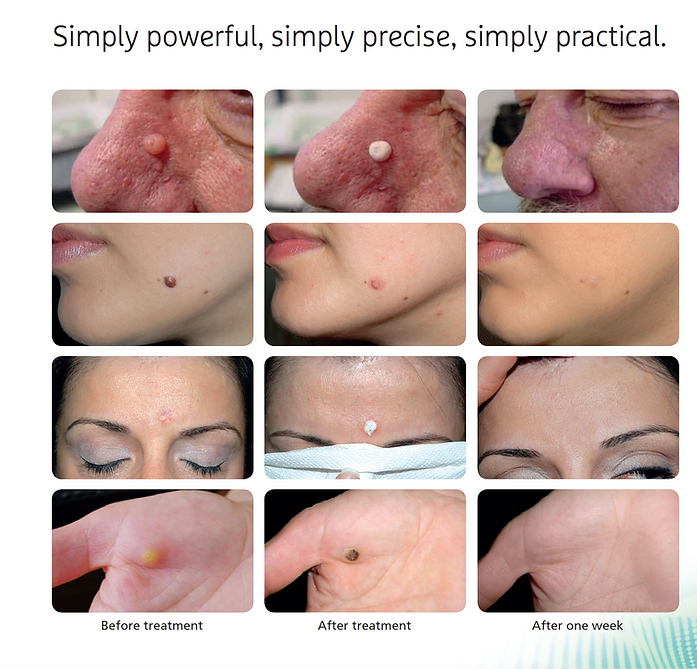SKIN TAG REMOVAL

Skin tag removal is a safe and effective procedure to remove unsightly skin tags. Our experienced team of dermatologists use the latest techniques to quickly and painlessly remove skin tags, leaving you with smooth, healthy skin. Contact us today to learn more about our skin tag removal services.
FreezPen®
Skin Tag removal, Warts, Verrucas, Moles, Blood Spots
Skin Tags are very common. They are soft, harmless lesions that appear to hang off the skin. Whilst they are not harmful, many of our clients choose to have them removed as they feel the skin tags are unsightly, or because they catch on clothing.
Freezpen can remove the most common skin pathologies in just a few seconds: verrucae, skin tags, solar lentigo pigmented spots, actinic keratoses, seborrheic keratoses, hemangioma, molluscum contagiosum condyloma, plantar warts, and more...
Meet the advanced technology in CryoTherapy that offers quick, effective treatment to remove unwanted skin lesions and erase benign skin defects safely, precisely and comfortably.


PRICING
FreezPen
Book your free skin consultation today – personalised advice to achieve healthy, glowing skin.
Skin Tag, Warts, Verrucas, Moles
From 50 British pounds
FAQ
Helpful Information
What is FreezPen?
FreezPen (Cryosurgery) is a procedure that uses extreme cold to destroy tissue.
How is FreezPen better than other methods of removing skin lesions?
FreezPen requires no anaesthesia and has less scarring than other techniques of skin lesion removal with minimal post-op care.
What types of lesions are appropriate to freeze?
Almost any unwanted skin lesions are appropriate such as warts, moles, actinic keratosis, seborrheic keratosis, keloids, lentigos, dermatofibromas, and hemangiomas to just name a few. In most practices, over 90% of unwanted lesions encountered are amenable to using cryosurgery.
What types of lesions are NOT appropriate to freeze?
All Melanomas and Recurrent Basal Cell Carcinomas are contraindicated for cryosurgery
What are the series of events after the cryosurgery procedure?
During the procedure, the area freezes and turns white. After this white area thaws, a flushing occurs that turns the area red. This thawing is associated with a pinching sensation as a wheal is formed. This wheal may develop into a blister or not depending on the area of the body and length of freeze. This blister may
last 3-5 days then begin to form a scab. This scab will fall off in 1-2 weeks.
Depending on the extent of freeze and tissue area, a new scab may form and repeat the process. The lesion will be completely healed in 2-6 weeks, again depending on the extent of freeze and tissue area. After primary healing occurs, the area will be lighter than the surrounding area due to loss of melanocytes.
Melanocytes are very cold sensitive, dying at -5°C and below.
Is there any anesthesia?
No! The extreme cold causes anesthesia soon after applied, which allows the procedure to be tolerable.
How many lesions can be frozen at one session?
Usually it is prudent to freeze only 3 lesions per session to limit the degree of systemic inflammatory response.
Is FreezPen FDA registered and CR Marked?
Yes fully registered.






